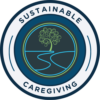How do we know when it is no longer safe for Mom or Dad to live alone? That question ranks near the top of the worry list. It sits in the lap of, “When is it no longer safe for Mom or Dad to continue driving.” The two questions are similar in that both demonstrate our concern for our parent’s safety juxtaposed against our parent’s fiercely held desire for independence. In addition to being emotionally charged, both questions also have enormous ramifications for us as the family caregiver. Ideally, the conversation about the available options would have taken place long before the need presented itself. Unfortunately, these difficult conversations are often avoided until a decision is urgent. I avoided the topic with complete intention.
I was confident that Dad would refuse to go into an assisted living facility. His memories were of nursing homes that warehoused older folks. One of the biggest battles of our adult relationship happened when I insisted that his mom go into a nursing home. Home care services could no longer handle my grandmother. She had been living with my parents for eleven years. Taking care of her became an extreme burden on my mom’s health. Grandma was 101 years old, not frail and had severe dementia. Dad refused to consider the idea and I thought he and I would never speak again. He finally relented and his mom stayed in a nursing home for three years until she passed at the age of 104. Dad or Mom went to visit her everyday. It was not a happy place. I knew that Dad expected the same level of “devotion” from me, but I mistakenly thought that when the time came, I could show Dad that the current options were like the coed dorm experience that he missed out on when he went to war. But, I would definitely wait until the time came because getting a “no” early in the process would be a difficult obstacle to overcome. So, I waited and waited and waited.
The series of events that led me to realize that he could no longer live alone came fast and furious the first time. Dad was 94. Joe and I were living in France and I talked to him three to four times a week. We had long conversations about politics, family, his health, our travels and any number of topics. It seemed he was still sharp and managing well until the fire. He had a tray of 30+ candles that he lit most evenings. The last time he did this, he fell asleep on the sofa and awoke to a smoke filled condo. The candles had burnt down through the tray and the dresser was in flames. He had the presence of mind to get a towel, soak it and throw it over the dresser. The flames were extinguished. When Dad shared that there had been a fire, he left out a few details. He neglected to share that the insurance company insisted that he stay elsewhere due to the excessive smoke and that they would pay for his accommodations. He did not tell me that the damage required new flooring, walls painted, replacement of bedding and curtains, all totaling over $37K. He did not tell me that he was having trouble walking due to the slices in his feet from the exploded glass that had held many of the candles. Little by little, the details came out.
I started to listen during my conversations with Dad with different ears. Joe and I made plans to return to the US. Once back, Dad was diagnosed with A-fib which would not have happened if we were not there because he refused to wear the monitor and only relented after I had a complete meltdown over what I considered to be his stubbornness and complete lack of responsibility. It was the first of many battles that left me baffled. Why was he using such poor judgement; complaining about the frequent fluttering of his heart, yet refusing to follow the prescribed method to determine the cause? We moved forward with a pacemaker and new meds, including Coumadin, a blood thinner and complete nightmare to manage. Then, one night, he had passed out three times and didn’t tell me. Didn’t tell me, when I was in the next room. I woke up when I heard him struggling to stand in his bathroom. 911. He had had a bleed. I didn’t know what that was. I thought he was dying. He stopped taking the Coumadin and within weeks had a stroke. Hospital. Rehab at a facility. Rehab at home. Fortunately, fully recovered. Eliquis replaced Coumadin. Insisted he could still drive and did because he had hidden keys and our battles had made me battle-weary. I was in the rapids, struggling to keep my head above water. I would go for a run to relieve stress and return at a whole new stress level because his circular arguments played over and over in my head with every step. It seemed obvious that he should not be living alone, obvious to everyone but him.
Fast forward three years and with lots of systems in place, Joe and I moved out, but stayed close. I was still spending two to three hours a day at his place managing things, but it gave us some much needed space. Then, little by little, I noticed daily decisions and events that were concerning. He blew up eggs once a week, took the golf cart onto dangerous roads, enjoyed talking to telemarketers and then became a victim of identity theft, wasn’t eating in order to lose weight and passed out, complained about his balance, but regularly got on ladders. It felt like we were one incident away from serious consequences. My time at Dad’s increased to four to six hours a day and I often left feeling uncomfortable about what he would get up to while I was gone. This time the decision wasn’t as clear, but he clearly needed more oversight. The assisted living facility conversations had been had, deposits placed and returned and ‘over his dead body’ was his current position. Joe and I moved back in with Dad. It isn’t easy. I experience the common caregiver trifecta of emotions: guilt, resentment and anger. They flow one into the other and in all directions creating combinations that can be head spinning. Acceptance has allowed all of those emotions to live at low levels and gratitude even winds its way in now and then, at least once a day.
Sometimes it quickly becomes obvious that living alone is no longer safe for our caree and other times it is like asking a Magic 8-ball to predict the future. There are many articles on the subject and in spite of the lists that are offered, it is rarely something that can be determined with a checklist. The guidelines can certainly help us make the decision and as with many decisions in life it may never be clear if our timing was right.
Things to consider in preparation for a change in living arrangements:
- Be prepared. Gather the information before there is a need
- Ask your caree what their wishes are when they are no longer able to live on their own
- Talk to family members about roles and responsibilities
- Research home care options
- Research retirement homes, assisted living centers and nursing homes
What I know now:
- Where there’s smoke there’s fire. Hindsight is 20/20 and what I considered stubborn irrational behavior was likely early signs of cognitive decline.
- Getting involved in Dad’s care before there was an urgent need was invaluable. I was able to understand his current health status, his medications and I developed a relationship with his doctors before we were in crisis mode.
- All home care agencies are not the same. Careful selection of the agency and continued involvement with the staff and aides is crucial to creating the safest experience.
- Something unfortunate could have happened whether I was there or not, so once I’d done the best to minimize the risks, acceptance rather than obsession creates sustainability.
Navigating the Caregiver River: A Journey to Sustainable Caregiving is available on Amazon. Also, check out the Self-Caregiving Strategies Podcast.
Schedule Theresa Wilbanks to speak on caregiving and empower the caregivers in your workplace or community with the 12 Sustainable Caregiving Strategies.
Advice offered is for general information only; please contact your healthcare team, legal or financial advisors to guide your particular situation.


Pingback: Sustainable Families: Have the Talk Now - Sustainable Caregiving™